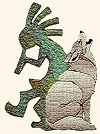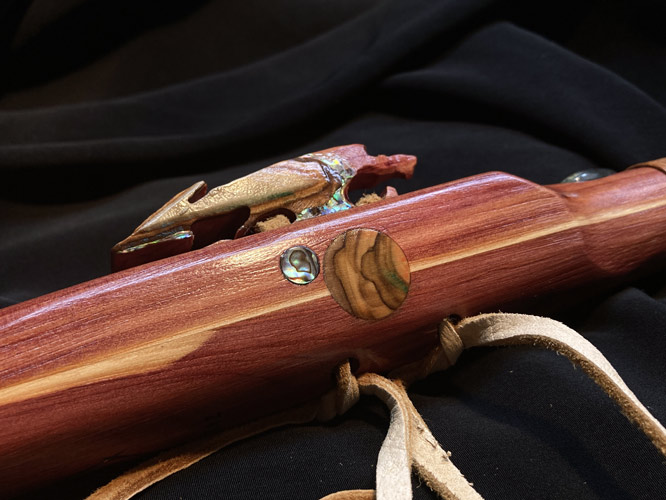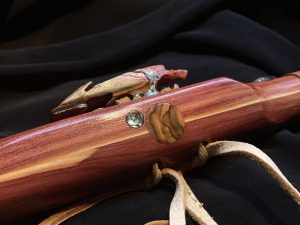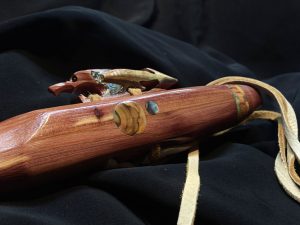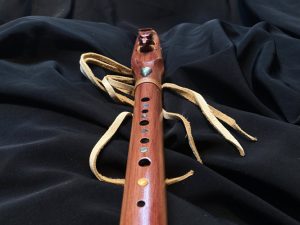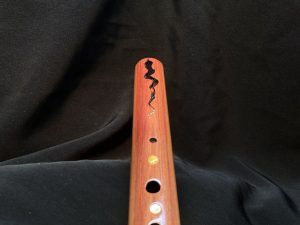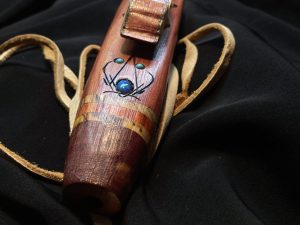Yep……, this flute has yet another bird for the fetish block. However, the flute itself is significantly different; It has an Amaj melodic tuning, in a Hitzaz (Ousak) scale. The 8 note sequences of this scale are divided into what are known as maqams. Countries throughout the Middle East, each have a number of these sequences that are tied to national heritage, and religion. Sort of like trademarks. There are approximately 50-60 of these sequences, and mine uses a thumb hole to achieve the highest note. Specifically, I consider mine kind of a wobbler, in that it is a Turkish sequence, but if the third note in the scale were to be lowered a semi-tone from C#, to C, it actually becomes Greek. Practice will be the key to this instrument, as muscle memory associated with a standard Native American style flute, goes out the window, particularly with a thumb hole. I’ve placed a rawhide wrap directly north or above that thumb hole, hoping it will be easier to find sight unseen during play. I thought about dishing the hole, but that reduces half holing options, and gave it up years ago. A search on Wikipedia for “Arabic Maqam” will provide a dizzying amount of information on the subject.
Ingredients of this instrument include Oklahoma red cedar, canary wood, Bethlehem olive, walnut burl, yew burl and mappa burl. Stone work includes Ethiopian fire opal, turquoise, labradorite, abalone, spiny oyster, almandine garnet, Brazilian azotic topaz, and hematite beads.
Thanks for visiting my page. Go out and play nice and don’t run with scissors.
